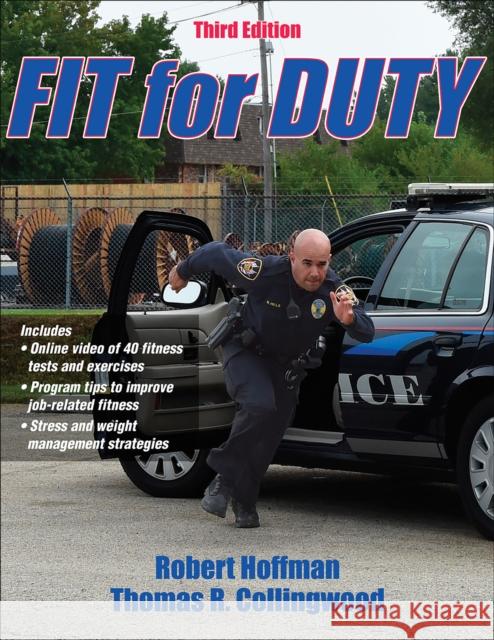Fit for Duty » książka
Fit for Duty
ISBN-13: 9781450496490 / Angielski / Miękka / 2015 / 312 str.
When facing threats of violence and terrorism, law enforcement officers are often critical first responders. The ability of these officers to be alert, physically ready, and mentally prepared to handle the hazardous situations that are a regular part of the profession is essential to their agencies and the communities they protect. Fit for Duty, Third Edition With Online Video, provides practical information on creating and implementing physical fitness and wellness programs to help law enforcement officers fulfill their demanding job requirements. Authors Robert Hoffman and Thomas R. Collingwood offer a comprehensive resource with job-specific training and strategies supported by more than 60 years of experience helping law enforcement officers achieve physical fitness and lead healthier lives. Now fully updated with current statistics, anecdotes, and research from agencies across North America, Fit for Duty, Third Edition, contains the following: - Expanded content on physical readiness that provides guidelines and helps readers understand how their fitness affects their ability to perform - A new chapter on nontraditional training that provides instruction on incorporating stability and medicine ball exercises, circuit training, plyometrics, Pilates, and yoga into exercise routines - Accompanying online video that demonstrates 40 test protocols and exercises, showing officers how to properly perform the recommended activities - Reproducible checklists and forms that make instruction easy and allow officers to incorporate fitness into daily routines - An image bank that contains all the forms, figures, tables, and technique photos from the book Fit for Duty, Third Edition, is divided into four progressive sections. The text starts with big-picture information on fitness assessment, beginning with the general fitness levels of the entire nation and then focusing on how fit law enforcement officers compare to the general population. Part II explains the importance of physical fitness and how to train in each of those specific areas to increase cardiorespiratory endurance, muscular strength and endurance, explosive strength, flexibility, agility, speed, and anaerobic power. Part III focuses on lifestyle components of fitness, including diet and nutrition, weight management, stress management, smoking cessation, and the prevention of substance abuse. Part IV ties together all information from the previous sections into achievable plans and goals. It also explains how to avoid common hurdles and pitfalls of adopting lifestyle changes so that officers will have positive results. Throughout the text, exercise drills are featured in a numbered, step-by-step format so that people of all fitness levels can easily follow them. With this text, law enforcement instructors and administrators can establish complete and customized fitness programs that prepare current and future officers in every branch of service. Individual officers will receive the tools they need to improve their fitness levels, which will help them in many situations they might encounter.











